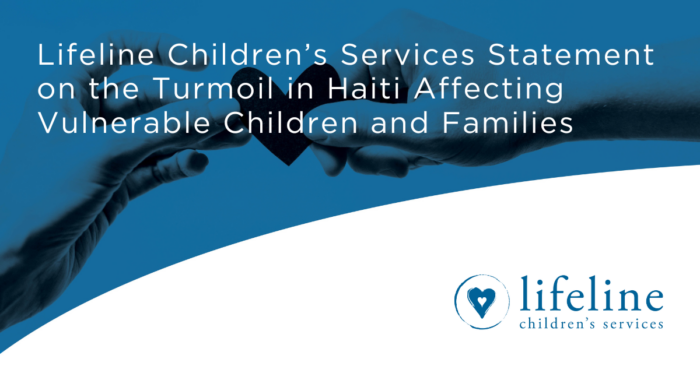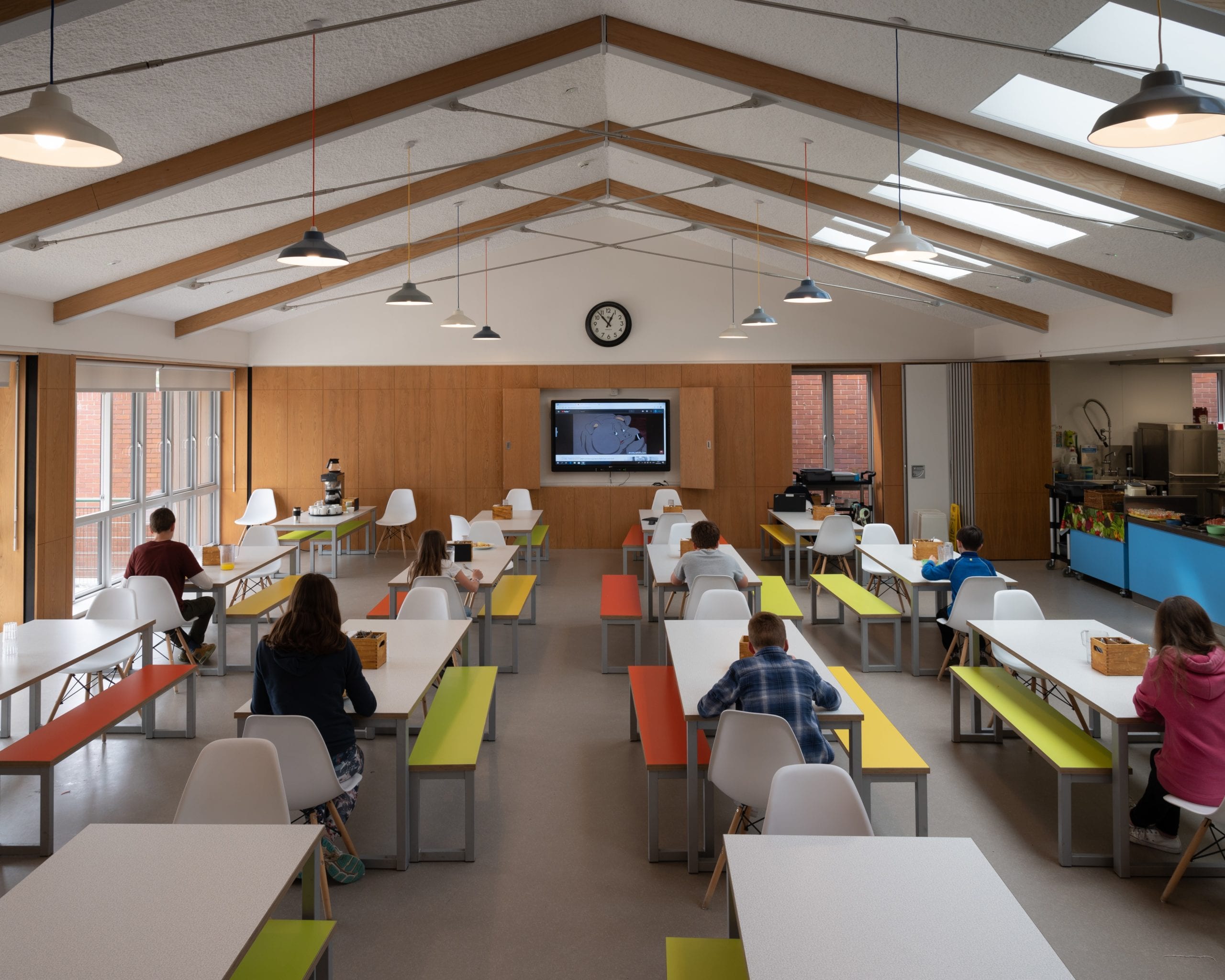Compiled by Jenny Riddle from contributions by Lynn Beckett and Angela Mains
In the middle of this pandemic, almost every decision feels like the weight of the world. Lifeline Children’s Services understands that parents across the country are dealing with a myriad of feelings over schooling options this fall. Some parents have no options; some have several options.
Parents are asking questions about each child’s social, emotional, and physical health as well as family health and needs. There is no one-size-fits-all answer. Preparing children for school this year is different than any other. Not only do we have to prepare our children for the normal transition struggles of starting a new school year, but parents now have a multitude of extra considerations, including changing avenues of education overall. Each parent has to consider what is best in their unique situation. Comparison is rarely a good thing, but in this situation, it has to go completely out the window. So no matter what direction you have chosen, here are some tips and ideas to keep in mind.
Setting the Tone
Parents are wrestling with decisions about education in ways they could have never imagined. They have their own big emotions they have carried for months. Now, they must lead their children through a never-ending maze of difficult changes. Parents need to recognize that they set the tone of the home regarding attitudes toward school, no matter what that looks like for their family.
- First and foremost, parents must regulate their own feelings and anxieties they may have about the transition to what will be a very different year of learning. Whether their kids are back in the classroom, virtual learning from home, or homeschooling, the year will look very differently. The parents set the tone for the family; if the parent is anxious, complaining, or expressing anger about the changes, children will pick up on those feelings. Because children are not able to name and express feelings in words, those feelings will likely come out in maladaptive behavior or psychosomatic symptoms like headaches, tummy aches, lethargy. If a child exhibits these symptoms, it is a clue they may need help navigating and understanding what is happening around them.
- Families may find that memorizing a verse together about fear, such as 1 Peter 5:7, Philippians 4: 6-7 or Joshua 1:9, is a helpful way to focus on God’s constant care and presence with them.
- Parents should intentionally talk about the upcoming school year with their children in an even, compassionate way. Talk specifically about things that will be different. Children of all ages need to know as much information as is developmentally appropriate. Knowledge is power. Not telling them information could increase their distrust in you.
Heading Back to Traditional School
If this is the choice you have made for your family, consider these suggestions, in addition to typical back to school tips that can be found here and here.
- Think about your child’s specific needs. From their perspective, what is going to be the most difficult? What will they need help thinking through? Help them to know healthy and specific ways to meet their unique needs. For example, some school districts are transitioning to water bottles instead of drinking fountains, as fountains could be a place that spreads germs and viruses. If kids have metal water bottles falling off of their desks or dropping on the ground, will the sound be unnerving for your child? What are appropriate things that can be worked out with their teacher to deal with this? Do they need to leave the room for a walk to complete the stress cycle created by the noise? You know how your child typically calms themselves. How can we prescribe that behavior in a socially adaptive way? Think through these scenarios, and empower your child and their teacher with acceptable ways to cope.
- To help your child process their feelings, use statements like, “I imagine that if I were you, I might feel …,” or “It seems weird to go back to school like this. Lots of kids I know are having a ton of feelings about all of the changes. I wonder if any of that is true for you? It would make sense if it were.” Empathetic statements like these open the door to normalize feelings and provide safety for your child to be vulnerable. If your child is already showing signs of anxiety, as indicated by being irritable, chewing fingernails, fidgeting (maybe more than normal), talking incessantly, and more, then you might say something like, “I see that you are feeling pretty anxious right now. I’m thinking this has to do with all the upcoming changes to the school year. Let’s talk about that.”
- Keep in mind that asking lots of questions of your child likely will increase their anxiety. Making statements and observations will help them to feel seen without putting unneeded pressure on them to answer questions or put words to name difficult emotions.
- Connect with your child’s school and, if possible, learn about any changes that will be made in the school and classroom. For example, will desks be farther apart? Will there be different pathways to walk inside the school? How will the cafeteria or recess be different? Begin to explain these changes to your child, explaining why those changes are helpful. Try to frame these differences in a positive and cooperative way. Use language such as “This helps keep us healthy” rather than “This is so we don’t get sick and die.”
- Many kids are transitioning to a different school, e.g. elementary to intermediate or junior high to high school. Try to take a tour of the school; ask the school if you can video a tour to show your child; or ask the school to do their own virtual tour and post it on their website. Tours help your child have a visual of where they will be going and, thus, removing some of the anxiety that accompanies something “new.” Virtual tours that include messages from key staff, teachers, media specialists, custodians, food service workers, etc. are helpful.
- If a child is required to wear a mask, begin two weeks before school with some desensitization. You may start in small increments of wearing a mask for 15 minutes and then build up to longer times. Or, have your child wear a mask while they are watching TV or playing a video game so that they can begin to adjust to the feel and breathing with a mask on. Your child may also enjoy their stuffed animals or dolls wearing masks too. You can even utilize the opportunity to role play mask wearing and the challenges associated with it for your child with their stuffed animals and dolls.
- Additionally, consider how facial covers will affect your child. Will masks make it even harder for children to accurately read facial expressions? Will your child have sensory issues or reactions? Will wearing a mask trigger past trauma? Talk with your child, their teacher, and the school administration about these emotions, possible challenges, and ways to help your child cope.
- Practice washing hands and other hygiene safety exercises they will need to do on their own at school.
- If needed, act out possible scenarios and scripts that will help your child remember the guidelines for the school. For example, if a friend rushes to hug you, how can you respond? You could make up a song, rap, or script that works for your child, like “My space, your space, we keep them separated.”
- Two weeks before school begins, set and follow an appropriate bedtime for a good night’s sleep so your child is ready to learn.
- As a result of the unusual end of school last year as well as summer break, parents need to get updated 504/IEPs for kids as they have likely regressed in some areas.
Home School or Virtual Learning
Many parents never expected to be homeschooling or virtual schooling their child. These are two very different approaches to education. If you are a homeschool parent, you have likely spent time carefully choosing curriculum and becoming familiar with the requirements. This is not the same as trying to facilitate your child’s learning at home while possibly also trying to do your own job from home. Additionally, if you are a veteran homeschool family, the need to stay at home is new and different. With many museums and educational experiences closed, as well as co-ops, you are in a different situation than ever before with new challenges. Here are some ideas to address some unique challenges that this pandemic presents.
- Even if most things are similar, everything can still feel different. Similar to tips for talking to children who are returning to traditional schooling, you can help your child process their feelings by using statements like, “I imagine that if I were you, I might feel…,” or “It may seem weird to go back to school like this. I would miss my friends and would think you would too.” Empathetic statements like these normalize their feelings and provide a safe conversation for your child to be vulnerable. If your child is showing signs of anxiety, such as being irritable, chewing fingernails, fidgeting (more than normal), talking incessantly, and more, then you might say something like, “I see that you are feeling pretty anxious right now. I think this may have to do with the changes for this school year. Let’s talk about that.”
- Being at home every day can feel mundane. Nothing changes. While that can be good for some of our kids, it can also feel rather hopeless for many of us. Creating structure is extremely helpful, especially for our children who tend to have higher levels of anxiety. Within that structure, though, plan for a part of your day that intentionally changes. Find or create activities that are different. Depending on your comfort level, this time might include something like heading to the nearest state park for a picnic; creating a slip-n-slide in your back yard; cooking a dish from another country; doing a virtual tour of a museum; or, when the weather cools off, having a camp fire. Although our children need structure and predictability, they also need novelty. Find ways to incorporate new and novel experiences at least a couple of times a week to help you and your family from feeling hopeless.
- Find creative ways for your child (and you) to have access to friends. This could mean allowing children to play outside or setting up a virtual play time. You could form your own co-op with other homeschool or virtual learners where you meet somewhere to do work and play together while wearing masks.
- If you are a parent who is working from home and doing school at home with your child, whether homeschooling or virtual schooling, it is easy for your day to be completely saturated with giving to others and a workday that rarely ends. Be sure to set aside daily time for you to recharge or, at least, a solid time once a week.
- Find a group of supportive friends who are on this journey with you. No matter which option you are pursuing, it is not easy.
No situation is easy, but there is hope in all of them because we can trust in the Lord’s promise of presence — He will be with us and will never leave us, even when we fail; even when the whole day falls apart; even when we can’t explain math; even when we worry about our child’s safety; even when we don’t know how to help our child leave their mask on. We cannot do this apart from Him.
This year may be full of challenges; let it also be full of grace from the Lord — for one another, for our children, and for ourselves. Give grace; accept grace.
If your family is struggling with learning differences or are in need of extra help this year, let our Bridge Education Services team walk alongside your educational journey with hope and grace. If your family is struggling emotionally or if your connection to one another is at risk, reach out to Lifeline’s counseling team so that we can meet you with practical applications of hope and grace.




